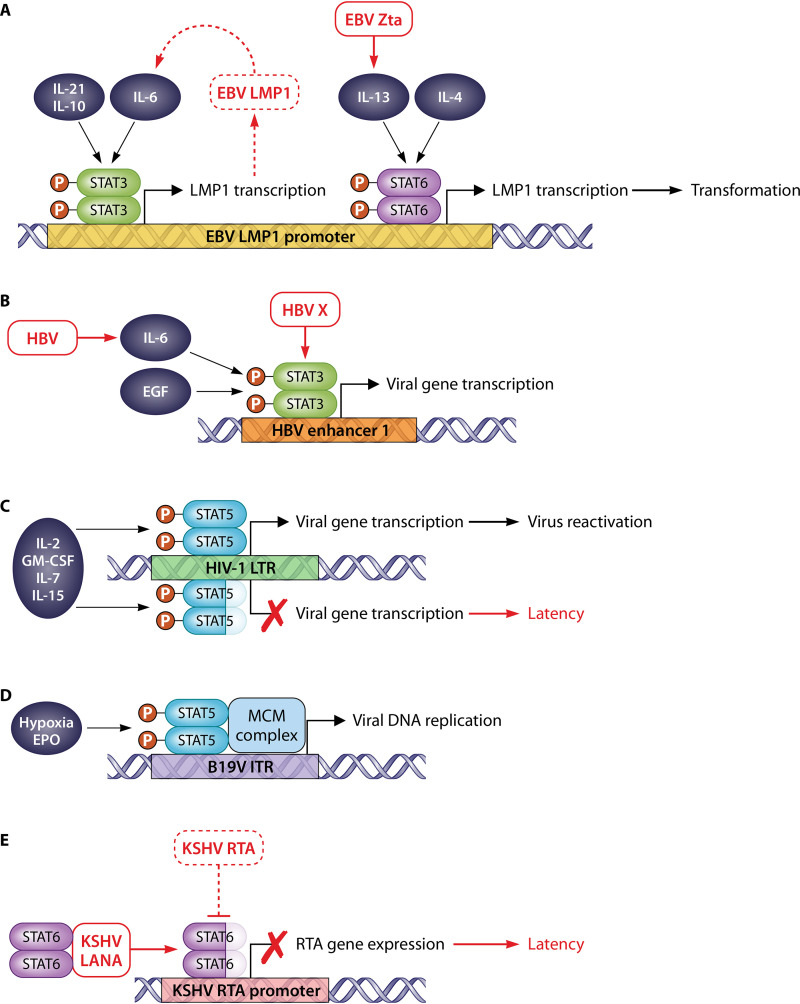FIG 2.
Examples of viruses with genomic STAT-binding sites. (A) The EBV LMP1 promoter contains STAT3 and STAT6 sites. Cytokines activating STAT3 (IL-6, IL-21, and IL-10) or STAT6 (IL-13 and IL-4) induce LMP1, promoting cell transformation. LMP1 upregulates IL-6, resulting in a positive-feedback loop. EBV Zta protein induces IL-13, and IL-13 induces LMP1 via STAT6. (B) HBV enhancer 1 contains a STAT3 site. Cytokines activating STAT3 (IL-6 and epidermal growth factor [EGF]) induce viral gene expression. HBV (including HBV X protein) induces STAT3 activation. (C) The HIV-1 LTR contains a STAT5 site that is activated by STAT5-activating cytokines (e.g., IL-2, GM-CSF, IL-7, and IL-15) to induce gene expression and viral reactivation; this is inhibited in cells expressing C-terminally truncated STAT5, which binds to the LTR site. (D) The B19V replication origin in inverted terminal repeats (ITRs) contains a STAT5 site, where EPO/hypoxia-activated pY-STAT3 recruits the minichromosome maintenance (MCM) complex to initiate replication. (E) The KSHV RTA promoter contains a STAT6 site; LANA mediates cleavage of the STAT6 C terminus, and cleaved STAT6 binds to the RTA promoter, repressing RTA expression to promote latency. During lytic infection, expressed RTA induces STAT6 degradation.

